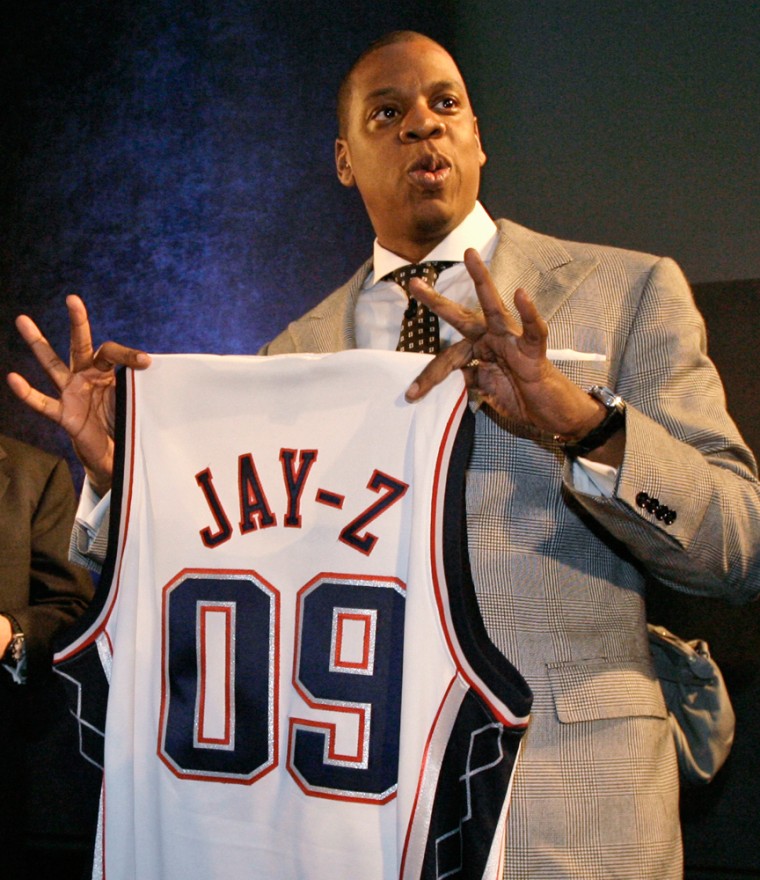Pop music has long been a young person's game. But when it comes to pocketing the biggest returns, oldsters rule.
The Rolling Stones, Madonna and Elton John are no one's idea of fresh-faced talent. Yet they and other veterans account for most of the top-earning musicians as measured by Forbes.
From June 2006 to June 2007, the geriatric Stones earned an estimated $88 million. The Material-Girl-turned-middle-aged mom pocketed $72 million. And nearly 37 years since he first reached the American Top 10 with "Your Song," Mr. Crocodile Rock pulled down an impressive $53 million.
That's not to say that the occasional green upstart can't boast some serious earning power too. Relative youngsters 50 Cent and Justin Timberlake made our list as well, with "Fitty" earning $33 million and ex-'N Sync star Timberlake getting $20 million. Of course, smarts and business savvy help too, as in the case of hip-hop entrepreneur Jay-Z, who has enjoyed an exceptionally lucrative 12 months with earnings of around $83 million.
But at the end of the day, most of the music industry's top earners are of older vintage. At a time when the recording industry is reeling from plunging music sales and rampant piracy, how do they accomplish such commercial success? Here are a few things to consider:
Tour, tour, tour
It goes without saying that recording artists establish their fame through sales of their music. And even with all the industry's problems, established favorites can still count on strong demand for their recorded product. Country star Tim McGraw, another member of our top earners list, released his new album "Let It Go" in March and has already sold 1.1 million units in the U.S., according to Nielsen/SoundScan.
But the really serious money comes from touring. And no one can pull in the big bucks like an older, established music act. The Stones had the highest-grossing tour in North America last year, pulling in a cool $139 million. Madonna's 2006 "Confessions" tour was the biggest ever for a female artist, grossing $194 million worldwide.
Helping drive those big grosses are eye-popping ticket prices. Madonna charged an average of $183.76 during her 2006 North American tour, while tickets to the Stones' concerts here averaged $136.63 and seats to Celine Dion's "A New Day..." show at Caesar's Palace in Las Vegas averaged $135.33, according to Pollstar.
How do they — or, more specifically, their concert promoters — get away with such prices? Simple: because they can. These older artists' fans aren't cash-poor college kids waiting tables to earn beer money. They're Baby Boomers and Gen X'ers who have the means to pay up to see their favorite stars.
By contrast, younger bands, even those that have enjoyed massive buzz or considerable commercial success, can't come close to commanding such prices. During the first half of this year, Arcade Fire charged an average of $30.74 per concert ticket, while the average ticket to a Snow Patrol show cost $31.27, according to Pollstar.
Be big in Japan and ...
Cracking the U.S. music market is the dream of every would-be pop star, American or otherwise. But there's no accounting for popular taste in any one country. What's hot one minute is stone cold over the next. Even platinum-selling recording artists can experience being "in" and "out" and then back "in." Just ask veteran acts like Mariah Carey or Aerosmith.
Many of top earning musicians maximize their earning potential by going out of their way to cultivate a fan base outside the U.S. as well, particularly in Europe and Asia. Madonna, Bon Jovi and Celine Dion aren't just popular musicians. They're worldwide pop stars.
"That's not something that happens by accident, that's not something that happens overnight,'' observes Los Angeles entertainment attorney Chris Castle. "That's something they work at. And they work at it because they want a career."
Because developing an overseas fan base takes time and effort, foreign markets tend to have the most commercial significance for older, established pop stars. Being able to count on the support of their fans in, say, Japan, Germany or Brazil opens a myriad of additional touring and retail opportunities for older artists.
"Outside of the United States, fans tend to stay loyal much longer,'' Castle says. "They aren't as influenced by the youth culture as we are here."
Develop Multiple Income Streams
Diversify. It's a fundamental tenet of investing. And it's also a key to commercial success in the music industry as well.
Most top earning musicians don't just rely on album sales, song downloads and touring to generate income. They also exploit the power of their brand name to push other products. That can be as simple as selling ringtones and fan merchandise or locking up lucrative sponsorship deals.
"When you're a big star, there are all sorts of little pieces like that," Castle observes. "Fifty grand here, 20 grand there and before you know it, you're talking real money."
But other, more enterprising stars also delve into completely different lines of business for added income. And it's here that younger stars can rise to the level of older top earners.
The textbook example is Jay-Z. After establishing his props as one of the most respected figures in hip-hop, the Brooklyn, N.Y., rapper used his fame and business smarts to start his Rocawear apparel line in 1999. In March, he sold the company for a cool $204 million. Forbes estimates that he pocketed about a quarter of that himself.
